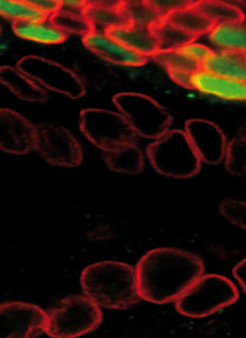
Press Page Jürg Müller
How do cells remember their fate?
Each cell of an organism contains a complete copy of the genetic material. Depending on the cell type and the developmental status, only a fraction of it is used, the rest is inactive. But what decides which genes are used? What is the mechanism of this regulation? These are the questions Jürg Müller and his team seek to answer.

In the embryo, developmental regulator genes control the formation of different cell types, tissues and organs as well as entire body parts such as arms, legs and torso. The proteins of the Polycomb and Trithorax group make sure that these genes are only active at times and in cells where needed. Polycomb proteins modify the genetic material (chromatin) in a way that keeps genes inactive. In contrast, Trithorax proteins activate genes by binding to their promoter sequence. In this way they can be read and translated into a protein. The corresponding “off” or “on” state is passed on to the following cell generations.
Tracing control mechanisms
The scientists in the research group of Jürg Müller have uncovered how the Polycomb and Trithorax proteins modify the chromatin. However, it remains unclear how these modifications silence or activate genes. Müller also wants to know how, during cell division, the modified genetic material is passed on to the daughter cells.
Cancer due to lacking control
By means of genetic, biophysical and biochemical methods, the scientists investigate the Polycomb and Trithorax proteins in the fruit fly Drosophila melanogaster. Their results could also play an important role for medicine: In humans, errors in the Polycomb and Trithorax system are associated with cancer or other diseases.



